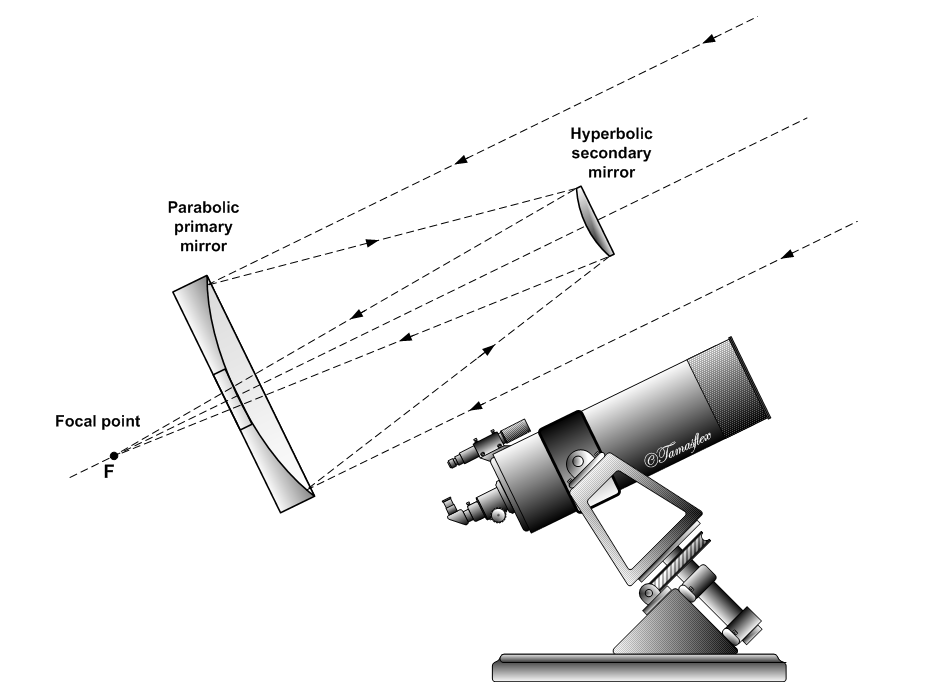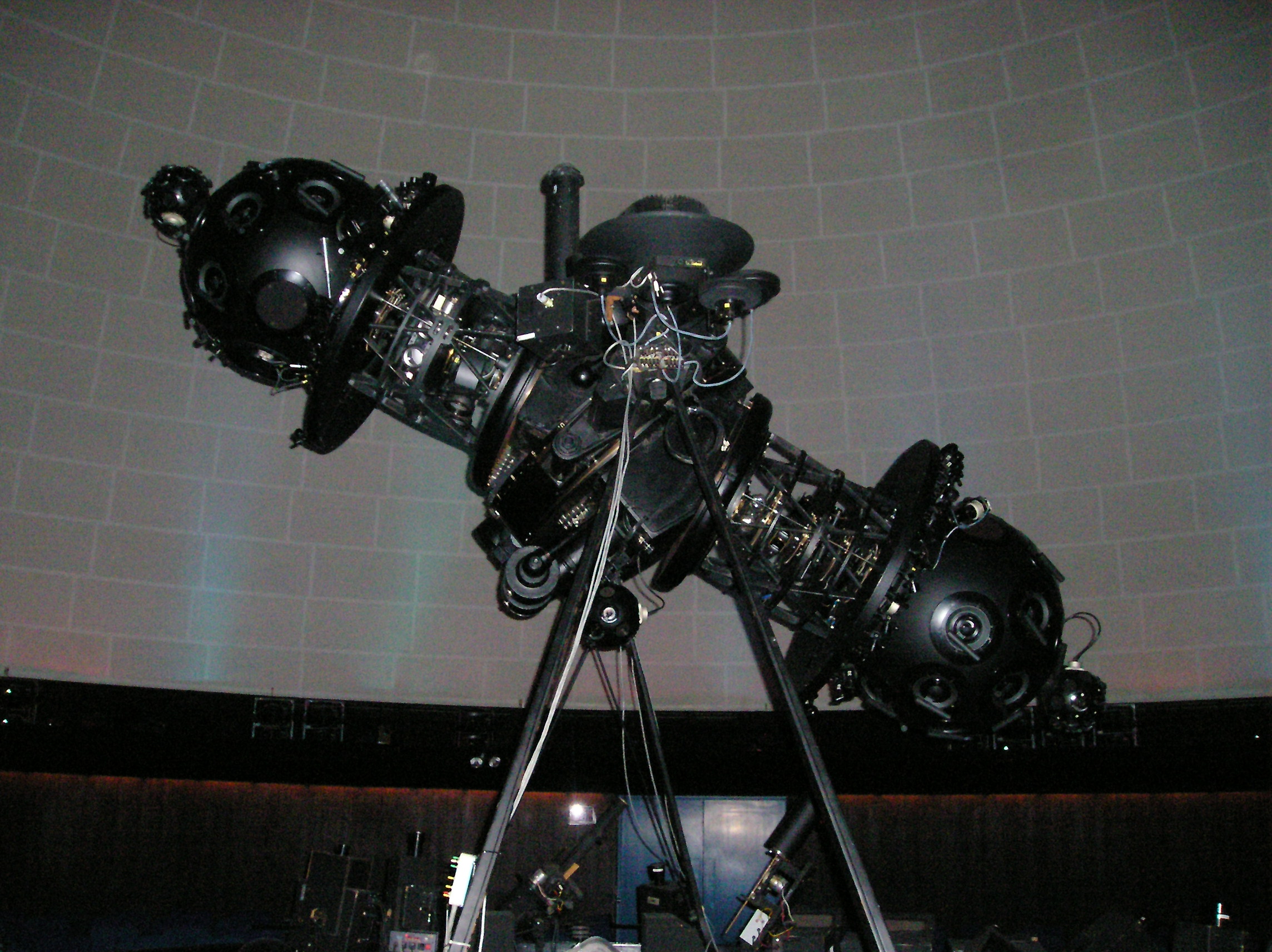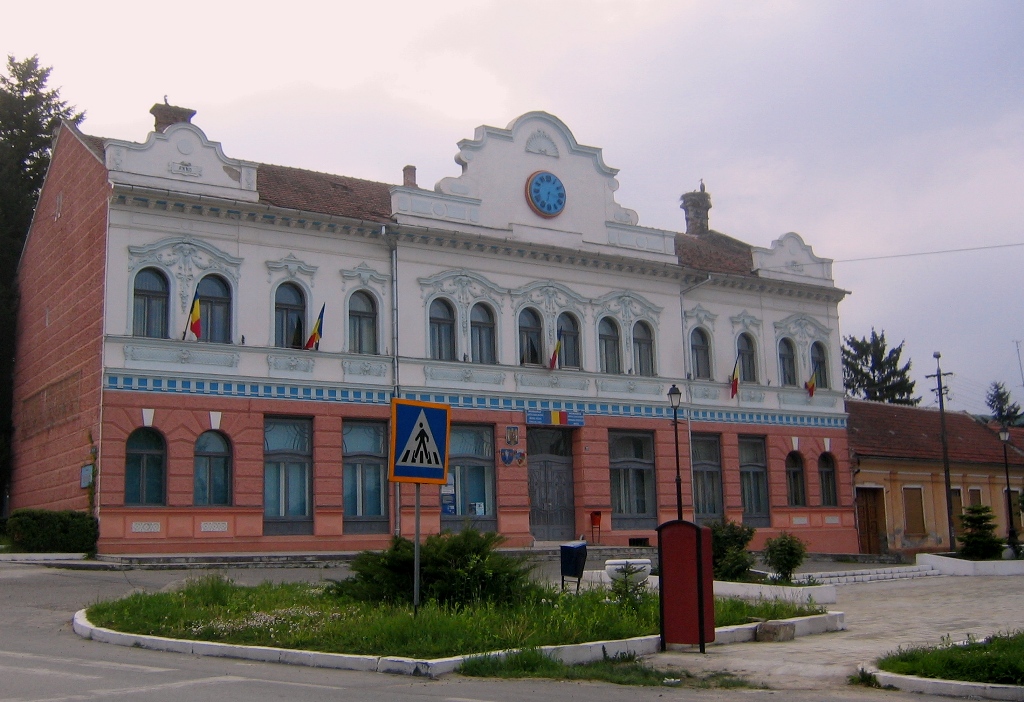|
Timișoara Astronomical Observatory
Timișoara Astronomical Observatory is a research institute in Timișoara, Romania, founded on 7 December 1962 by . The scientific activity is coordinated by the Astronomical Institute of the Romanian Academy, and the administrative activity by the local branch of the Romanian Academy. The Astronomical Observatory building has a basement, a ground floor and the equatorial instrument hall covered with a rotating dome. The dome and the main instrument of the observatory were made with own resources, in Timișoara. The optical instruments placed on the equatorial mount are: * a Cassegrain telescope with a 300/1690 mm Zeiss mirror equipped with an SBIG CCD camera, used for naked-eye observations and CCD stellar photometry, and * a 100/2000 mm Zeiss scope. Due to the development of Timișoara, the pollution and brightness of the night sky has increased, so the location of the observatory is no longer appropriate. It is desired to move it to Muntele Mic in Caraș-Severin County Car ... [...More Info...] [...Related Items...] OR: [Wikipedia] [Google] [Baidu] |
Astronomical Institute Of The Romanian Academy
The Astronomical Institute of the Romanian Academy was created in 1990 with the union of three astronomical observatories: the Bucharest Astronomical Observatory, the Cluj Observatory and the Timișoara Observatory. The Bucharest astronomical observatory History The astronomical observatory of Bucharest was established on April 1, 1908, by decree of the Minister of Education and Religious Affairs, Spiru Haret. Nicolae Coculescu was appointed first director of the observatory. Construction work began in 1910 on Filaret Hill in Carol Park (in the south of the city) and lasted two years. The astronomical observatory included a main building for scientific laboratories and administrative offices and a dome for an 11.5-meter telescope. Together with the astronomical observatory, a meteorological observatory was created. In 1920, the meteorological observatory was administratively separated from the astronomical observatory. In 1945, the astronomical observatory came under the coordina ... [...More Info...] [...Related Items...] OR: [Wikipedia] [Google] [Baidu] |
Timișoara
Timișoara (, , ; , also or ; ; ; see #Etymology, other names) is the capital city of Timiș County, Banat, and the main economic, social and cultural center in Western Romania. Located on the Bega (Tisza), Bega River, Timișoara is considered the informal capital city of the historical Banat region. From 1848 to 1860 it was the capital of the Serbian Vojvodina and the Voivodeship of Serbia and Banat of Temeschwar. With 250,849 inhabitants at the 2021 Romanian census, 2021 census, Timișoara is the country's List of cities and towns in Romania, fifth most populous city. It is home to around 400,000 inhabitants in its Timișoara metropolitan area, metropolitan area, while the Timișoara–Arad metropolis concentrates more than 70% of the population of Timiș and Arad County, Arad counties. Timișoara is a multicultural city, home to 21 ethnic groups and 18 religious denominations. Historically, the most numerous were the Banat Swabians, Swabian Germans, Jews and Hungarians, who ... [...More Info...] [...Related Items...] OR: [Wikipedia] [Google] [Baidu] |
Cassegrain Reflector
The Cassegrain reflector is a combination of a primary concave mirror and a secondary convex mirror, often used in optical telescopes and Antenna (radio), radio antennas, the main characteristic being that the optical path folds back onto itself, relative to the optical system's primary mirror entrance aperture. This design puts the Focus (optics), focal point at a convenient location behind the primary mirror and the convex secondary adds a Telephoto lens, telephoto effect creating a much longer focal length in a mechanically short system. In a symmetrical Cassegrain both mirrors are aligned about the optical axis, and the primary mirror usually contains a hole in the center, thus permitting the light to reach an eyepiece, a camera, or an image sensor. Alternatively, as in many radio telescopes, the final focus may be in front of the primary. In an asymmetrical Cassegrain, the mirror(s) may be tilted to avoid obscuration of the primary or to avoid the need for a hole in the prima ... [...More Info...] [...Related Items...] OR: [Wikipedia] [Google] [Baidu] |
Zeiss Projector
A Zeiss projector is one of a line of planetarium projectors manufactured by the Carl Zeiss AG, Carl Zeiss Company. Main models include Copernican (1924), Model I (1925), Model II (1926), Model III (1957), Model IV (1957), Model V (1965), Model VI (1968), Spacemaster (1970), Cosmorana (1984), Skymaster ZKP2 (1977), and Skymaster ZKP3 (1993). The first modern planetarium projectors were designed and built in 1924 by the Zeiss Works of Jena, Germany.Christopher Dewdney. Acquainted with the Night: Excursions Through the World After Dark'. Bloomsbury Publishing USA; 2005 [cited 14 October 2011]. . p. 278–279. Zeiss projectors are designed to sit in the middle of a dark, dome-covered room and project an accurate image of the stars and other astronomical objects on the dome. They are generally large, complicated, and imposing machines. The first Zeiss Mark I projector (the first planetarium projector in the world) was installed in the Deutsches Museum in Munich in August, 1923 ... [...More Info...] [...Related Items...] OR: [Wikipedia] [Google] [Baidu] |
Coelostat
{{Short pages monitor ... [...More Info...] [...Related Items...] OR: [Wikipedia] [Google] [Baidu] |
Romania
Romania is a country located at the crossroads of Central Europe, Central, Eastern Europe, Eastern and Southeast Europe. It borders Ukraine to the north and east, Hungary to the west, Serbia to the southwest, Bulgaria to the south, Moldova to the east, and the Black Sea to the southeast. It has a mainly continental climate, and an area of with a population of 19 million people. Romania is the List of European countries by area, twelfth-largest country in Europe and the List of European Union member states by population, sixth-most populous member state of the European Union. Europe's second-longest river, the Danube, empties into the Danube Delta in the southeast of the country. The Carpathian Mountains cross Romania from the north to the southwest and include Moldoveanu Peak, at an altitude of . Bucharest is the country's Bucharest metropolitan area, largest urban area and Economy of Romania, financial centre. Other major urban centers, urban areas include Cluj-Napoca, Timiș ... [...More Info...] [...Related Items...] OR: [Wikipedia] [Google] [Baidu] |
Romanian Academy
The Romanian Academy ( ) is a cultural forum founded in Bucharest, Romania, in 1866. It covers the scientific, artistic and literary domains. The academy has 181 active members who are elected for life. According to its bylaws, the academy's main goals are the cultivation of Romanian language and Romanian literature, the study of the national history of Romania and research into major scientific domains. Some of the academy's fundamental projects are the Romanian language dictionary ('' Dicționarul explicativ al limbii române''), the dictionary of Romanian literature, and the treatise on the history of the Romanian people. History On the initiative of C. A. Rosetti, the Academy was founded on April 1, 1866, as ''Societatea Literară Română''. The founding members were illustrious members of the Romanian society of the age. The name changed to ''Societatea Academică Romînă'' in 1867, and finally to ''Academia Română'' in 1879, during the reign of Carol I. The foun ... [...More Info...] [...Related Items...] OR: [Wikipedia] [Google] [Baidu] |
Equatorial Mount
An equatorial mount is a mount for instruments that compensates for Earth's rotation by having one rotational axis, called ''polar axis'', parallel to the Earth's axis of rotation. This type of mount is used for astronomical telescope mount, telescopes and cameras. The advantage of an equatorial mount lies in its ability to allow the instrument attached to it to stay fixed on any celestial object with diurnal motion by driving one axis at a constant speed. Such an arrangement is called a ''sidereal drive'' or ''clock drive''. Equatorial mounts achieve this by aligning their rotational axis with the Earth, a process known as ''polar alignment''. Astronomical telescope mounts In astronomical telescope mounts, the equatorial axis (the ''right ascension'') is paired with a second perpendicular coordinate axis, axis of motion (known as the ''declination''). The equatorial axis of the mount is often equipped with a motorized "''clock drive''", that rotates that axis one revolution e ... [...More Info...] [...Related Items...] OR: [Wikipedia] [Google] [Baidu] |
Caraș-Severin County
Caraș-Severin () is a county ( județ) of Romania on the border with Serbia. The majority of its territory lies within the historical region of Banat, with a few northeastern villages considered part of Transylvania. The county seat is Reșița. The Caraș-Severin county is part of the Danube–Criș–Mureș–Tisa Euroregion. Name In Serbo-Croatian, it is known as ''Karaš Severin''/Караш Северин or ''Karaš-Severinska županija'', in Hungarian as ''Krassó-Szörény megye'', in German as ''Kreis Karasch-Severin'', and in Bulgarian as Караш-Северин (translit. ''Karash-Severin''). Geography With 8,514 km2, it is the third largest county in Romania, after Timiș and Suceava counties. It is also the county through which the river Danube enters Romania. The mountains make up 67% of the county's surface, including the Southern Carpathians range, with Banat Mountains, Țarcu-Godeanu Mountains and Cernei Mountains and elevations between ... [...More Info...] [...Related Items...] OR: [Wikipedia] [Google] [Baidu] |
Astronomical Observatories In Romania
Astronomy is a natural science that studies astronomical object, celestial objects and the phenomena that occur in the cosmos. It uses mathematics, physics, and chemistry in order to explain their origin and their overall chronology of the Universe, evolution. Objects of interest include planets, natural satellite, moons, stars, nebulae, galaxy, galaxies, meteoroids, asteroids, and comets. Relevant phenomena include supernova explosions, gamma ray bursts, quasars, blazars, pulsars, and cosmic microwave background radiation. More generally, astronomy studies everything that originates beyond atmosphere of Earth, Earth's atmosphere. Cosmology is a branch of astronomy that studies the universe as a whole. Astronomy is one of the oldest natural sciences. The early civilizations in recorded history made methodical observations of the night sky. These include the Egyptian astronomy, Egyptians, Babylonian astronomy, Babylonians, Greek astronomy, Greeks, Indian astronomy, Indians, Ch ... [...More Info...] [...Related Items...] OR: [Wikipedia] [Google] [Baidu] |





